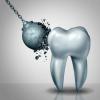
Breaking News
 The 3 Reasons Behind US Plot to Depose Venezuela's Maduro – Video #254
The 3 Reasons Behind US Plot to Depose Venezuela's Maduro – Video #254
 Evangelicals and the Veneration of Israel
Evangelicals and the Veneration of Israel
 Zohran Mamdani's Socialist Recipe for Economic Destruction
Zohran Mamdani's Socialist Recipe for Economic Destruction
 BREAKING: Fed-Up Citizens Sue New York AG Letitia James for Voter Intimidation...
BREAKING: Fed-Up Citizens Sue New York AG Letitia James for Voter Intimidation...
Top Tech News
 Goodbye, Cavities? Scientists Just Found a Way to Regrow Tooth Enamel
Goodbye, Cavities? Scientists Just Found a Way to Regrow Tooth Enamel
 Scientists Say They've Figured Out How to Transcribe Your Thoughts From an MRI Scan
Scientists Say They've Figured Out How to Transcribe Your Thoughts From an MRI Scan
 SanDisk stuffed 1 TB of storage into the smallest Type-C thumb drive ever
SanDisk stuffed 1 TB of storage into the smallest Type-C thumb drive ever
 Calling Dr. Grok. Can AI Do Better than Your Primary Physician?
Calling Dr. Grok. Can AI Do Better than Your Primary Physician?
 HUGE 32kWh LiFePO4 DIY Battery w/ 628Ah Cells! 90 Minute Build
HUGE 32kWh LiFePO4 DIY Battery w/ 628Ah Cells! 90 Minute Build
 What Has Bitcoin Become 17 Years After Satoshi Nakamoto Published The Whitepaper?
What Has Bitcoin Become 17 Years After Satoshi Nakamoto Published The Whitepaper?
 Japan just injected artificial blood into a human. No blood type needed. No refrigeration.
Japan just injected artificial blood into a human. No blood type needed. No refrigeration.
 The 6 Best LLM Tools To Run Models Locally
The 6 Best LLM Tools To Run Models Locally
 Testing My First Sodium-Ion Solar Battery
Testing My First Sodium-Ion Solar Battery
 A man once paralyzed from the waist down now stands on his own, not with machines or wires,...
A man once paralyzed from the waist down now stands on his own, not with machines or wires,...
Earth to Jupiter Via Magsail in 21 Days and Neptune in 18 Weeks

Nextbigfuture notes that the design looks very simple and achievable. If it works then by 2030s we would be able to mass produce probes by the thousands to explore the solar system and sending out telescopes to the gravitational lens point would give direct high-resolution imaging of exoplanets in thousands of solar systems.
The Plasma Magnet [PM] required relatively little energy and yet was capable of propelling a much larger mass at a velocity exceeding any current propulsion system, including advanced solar sails.
The Plasma Magnet was proposed by Slough. It arranges coils to use solar wind ions to induce a very large magnetosphere that is propelled by the solar wind. Unlike earlier proposals for magnetic sails that required a large electric coil kilometers in diameter to create the magnetic field, the induction of the solar wind ions to create the field meant that the structure was both low mass and that the size of the resulting magnetic field increased as the surrounding particle density declined. This allowed for a constant acceleration as the PM was propelled away from the sun, very different from solar sails and even magsails with fixed collecting areas.



